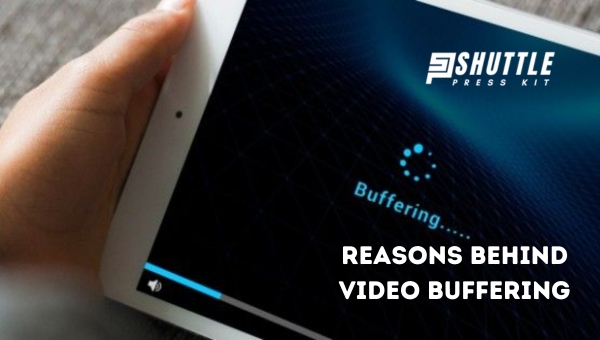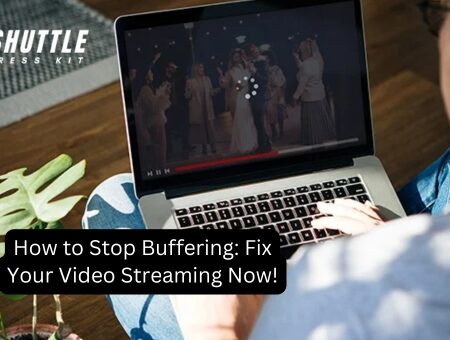Are you tired of staring at a loading screen instead of watching your favorite videos online? The struggle is real, but don’t worry! I’ve got some easy tricks to share that can help. In this article, I’ll show you how to stop buffering: learn to prevent internet video buffering issues once and for all. Who likes interruptions when they’re deep into a binge-watch session or catching up on the latest vlogs? Let’s dive into making those annoying pauses a thing of the past.
To tackle buffering and improve your video streaming experience, start by checking your internet connection speed. Sometimes, it’s as simple as moving closer to your Wi-Fi router or plugging directly into it with an Ethernet cable. Other times, closing other apps or devices using the network can free up bandwidth for smoother streaming. If issues persist, consider upgrading your internet plan for faster speeds or contacting your service provider for help. These steps are straightforward but effective in reducing buffering and enhancing your overall viewing experience.
Ways Of Stop Buffering

Buffering can be annoying when you’re trying to watch a video online. Here are several tips to make your videos play smoothly without any stops. Follow these steps, and you’ll likely see a big improvement.
Close Other Applications and Programs
Having too many applications open on your device can slow it down because they use up memory and power even if you’re not actively using them. This means there might not be enough resources left for streaming videos properly, leading to buffering. To fix this, close any program or app that you don’t need at the moment. This helps make sure that all your device’s power is focused on playing your video smoothly.
Another useful thing is to keep your computer tidy by checking for hidden programs that start up by themselves every time you turn on your device. Programs running in the background without you knowing can really slow things down.
Pause the Stream for a Few Moments
If your video keeps stopping to buffer, try pausing it for a little while. This lets the video load more ahead of where you’re watching so when you press play again, it won’t need to stop and start because more of the video is ready to go. Just waiting for a few minutes before clicking play again can give you a better watching experience without all those annoying pauses.
This might feel like it’s slowing things down more at first but giving the video extra time to get ready makes sure there are fewer interruptions later.
Reduce Video Quality
Watching videos in high definition (HD) looks great but takes longer to stream over the internet, which is why lowering the quality can help reduce buffering times. Sites like YouTube let you choose lower quality settings easily which means faster loading times for your videos without too many stops and starts as it plays.
While super sharp HD looks good on big screens, if you’re watching on something smaller like a phone, dropping down in quality won’t make much difference visually but will improve how smoothly videos play greatly.
Speed Up Your Internet Connection
- Check with speed testing tools online how fast your internet connection actually is.
- Restarting gadgets like modems or routers sometimes fixes connection problems.
- Use 5GHz Wi-Fi frequency if possible as it’s usually faster than 2.4GHz.
- Watch out for data caps from ISPs, which limit how much data you use each month.
- Changing DNS servers could mean quicker internet speeds too.
Improving these areas helps minimize disruptions during streaming since faster internet equals less buffering time needed for videos.
Also Read: Starlink Roof Mount Installation Guide: The Ultimate How-To
Remove Other Devices Connected To Your Network
Every device connected uses up part of your internet capacity so disconnect what’s not being used right now especially if they automatically check-in online such as phones or tablets doing updates in the background taking away bandwidth from what’s important – seamless streaming of that movie or show!
Test by turning off Wi-Fi on devices around then seeing if there’s an improvement with fewer interruptions during playback which proves other gadgets were indeed eating into precious available bandwidth meant more so for smooth viewing pleasurably uninterrupted experiences firsthand!
Try a Wired Ethernet Connection
Wi-Fi is super convenient but it might not always give you the best speed for streaming. Using a wired connection with an Ethernet cable directly links your device to the internet, usually giving you a faster and more reliable connection. This means smoother video play without as much buffering. It’s especially helpful if your Wi-Fi signal is weak or there are lots of walls between your device and the router.
Sometimes all it takes is plugging in a cable to get that perfect, interruption-free movie night. Although it might mean a bit more setup compared to just connecting over Wi-Fi, the improved stability and speed can make a big difference.
Clean Up Your Browser Settings
If videos are buffering too much, the problem might be right in your web browser. Browsers save bits of information from websites in something called cache which helps them load faster when you visit again. However, this stored data can pile up and slow things down after some time. By going into your browser’s settings and clearing out these saved files, you give it a fresh start, which could enhance performance noticeably.
Remember though: this boost might be temporary because browsers will start saving data again over time. To keep things consistently speedy, consider using tools that automatically clear out unneeded files ensuring smoother video streams without you having to do anything manually each time.
Reset and Upgrade Your Wi-Fi Device
Your Wi-Fi router needs attention too if you want everything running smoothly online including video streaming without buffers or pauses too often for comfort breaks enjoyment chain continuity suffered consequently essential factor addresses thereof simply resetting power cycling (turning off then back on) occasionally readjusts internal state leading potentially improved signal broadcast receptions conversely
Router maintenance should not be overlooked as outdated or malfunctioning routers can significantly impact streaming efficiency – keeping hardware up-to-date ensures that one enjoys fast and reliable internet access necessary for uninterrupted viewing pleasures waiting to be discovered journey embarks upon dimensions width breadth
Test Your VPN or Proxy
VPNs are great for privacy but sometimes they can slow down your Internet Speed leading to problems like buffering while streaming movies Using a VPN means all data has extra stops made along the way encrypted and decrypted may cause delays Try running tests without see their difference speed.
If find VPN impact considerable look into options provide better speeds example SecureLine technology designed specifically avoid slowdown doesn’t have risk losing benefits encryption security Either way worth taking few minutes check sure isn’t root cause behind any lagging issues face ensure get most both worlds enjoy privacy safety well balanced smooth playback sessions tailored suit wants needs!
Reasons Behind Video Buffering
Video buffering during streaming can be an annoyance, often interrupting the viewing experience. Buffering generally occurs when the video player fails to download enough data to play the video in real time. Various factors can contribute to this issue, impacting how smoothly your content plays back.

- Insufficient Internet Bandwidth: The most common reason for buffering is not having enough internet speed to keep up with the stream’s demand. If your connection is slow or others are using bandwidth heavily on the same network, you’re more likely to experience delays.
- Crowded Content Providers: Sometimes the issue isn’t with your connection but with the service providing the video. Sites can become crowded especially during peak times if many people are trying to watch or download content simultaneously.
- Out-of-date Technology: Using an old browser or an outdated graphics card can impede proper streaming functionalities and result in frequent buffering.
These issues highlight that buffering is typically related either directly or indirectly to challenges within network capabilities and device efficiencies.
Also Read: ISEKIE Starlink Router Wall Mount: Optimize Your Space and Review!
FAQs
Why does my video keep buffering?
Buffering occurs when there is a delay in streaming data to your device, usually due to a slow internet connection or network congestion.
How can I prevent buffering while streaming videos?
To reduce buffering, you can try connecting to a faster Wi-Fi network, closing other apps or devices using the same network, or lowering the video quality.
What can I do if buffering continues despite trying to fix it?
If buffering persists, you may need to contact your internet service provider to troubleshoot any connection issues or consider upgrading your internet plan for faster speeds.
Are there any settings on the streaming platform that can help reduce buffering?
Some streaming services allow you to adjust video playback settings, such as quality or resolution, which can help reduce buffering on slower internet connections.
Will using an Ethernet cable instead of Wi-Fi help stop buffering?
Using an Ethernet cable to connect your device directly to the router can provide a more stable and faster connection, which may reduce buffering while streaming videos.
Also Read: Starlink Volcano Mount Guide: Easy DIY Installation Tips
Conclusion
there are several effective strategies to stop buffering while streaming online content. Whether it’s optimizing your internet connection, adjusting video quality settings, or using a streaming device, taking proactive steps can help ensure a smoother viewing experience. By implementing these tips and troubleshooting techniques, users can minimize interruptions and enjoy a seamless streaming experience.
Overall, identifying the root cause of buffering issues and taking proactive steps to address them can greatly improve the quality of online streaming. By taking the time to optimize internet speed, adjust settings, and utilize technology solutions, users can mitigate buffering problems and enhance their viewing experience. With a bit of troubleshooting and perseverance, buffering can be minimized or eliminated, allowing for a more enjoyable and uninterrupted streaming experience.
